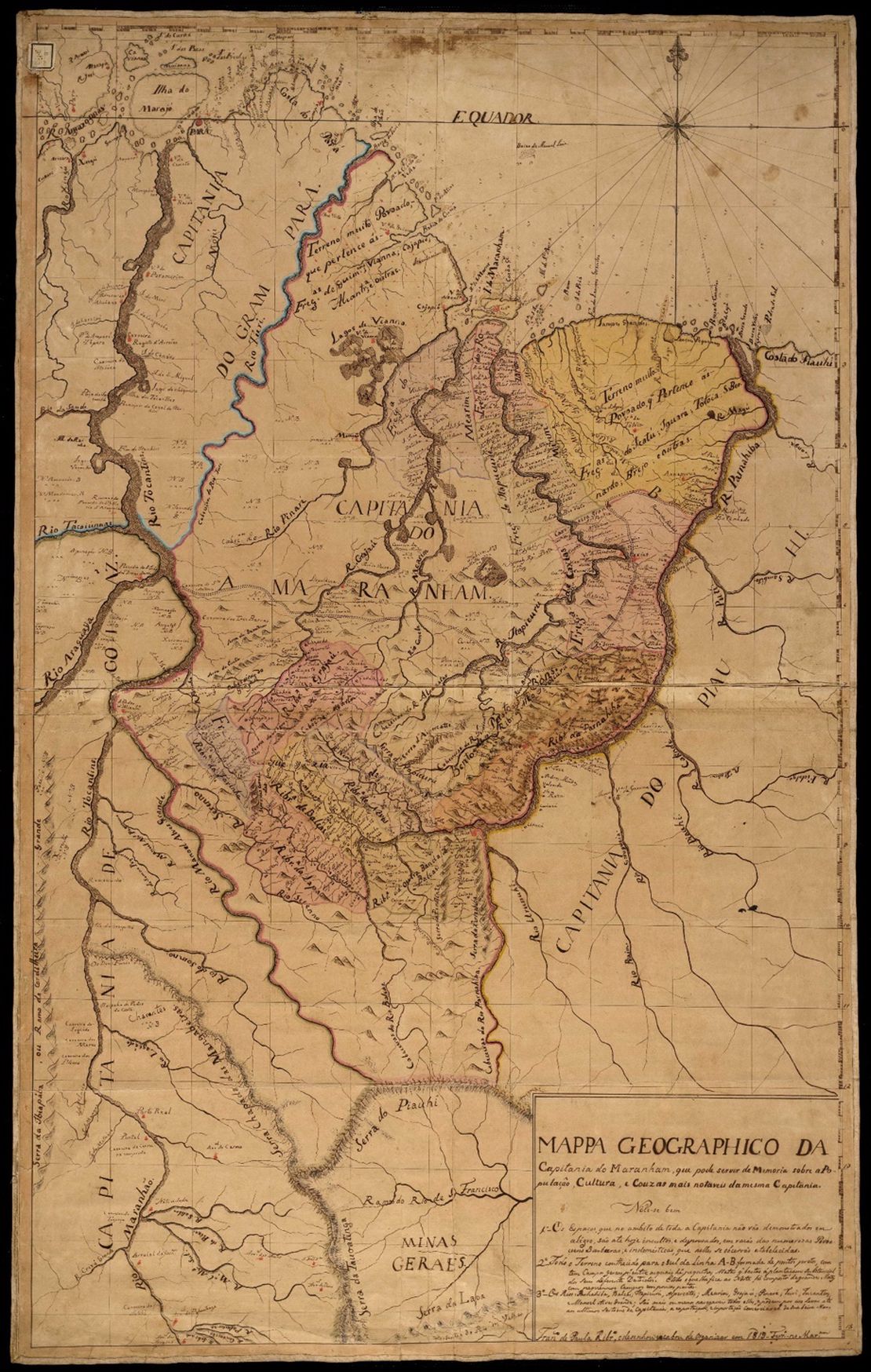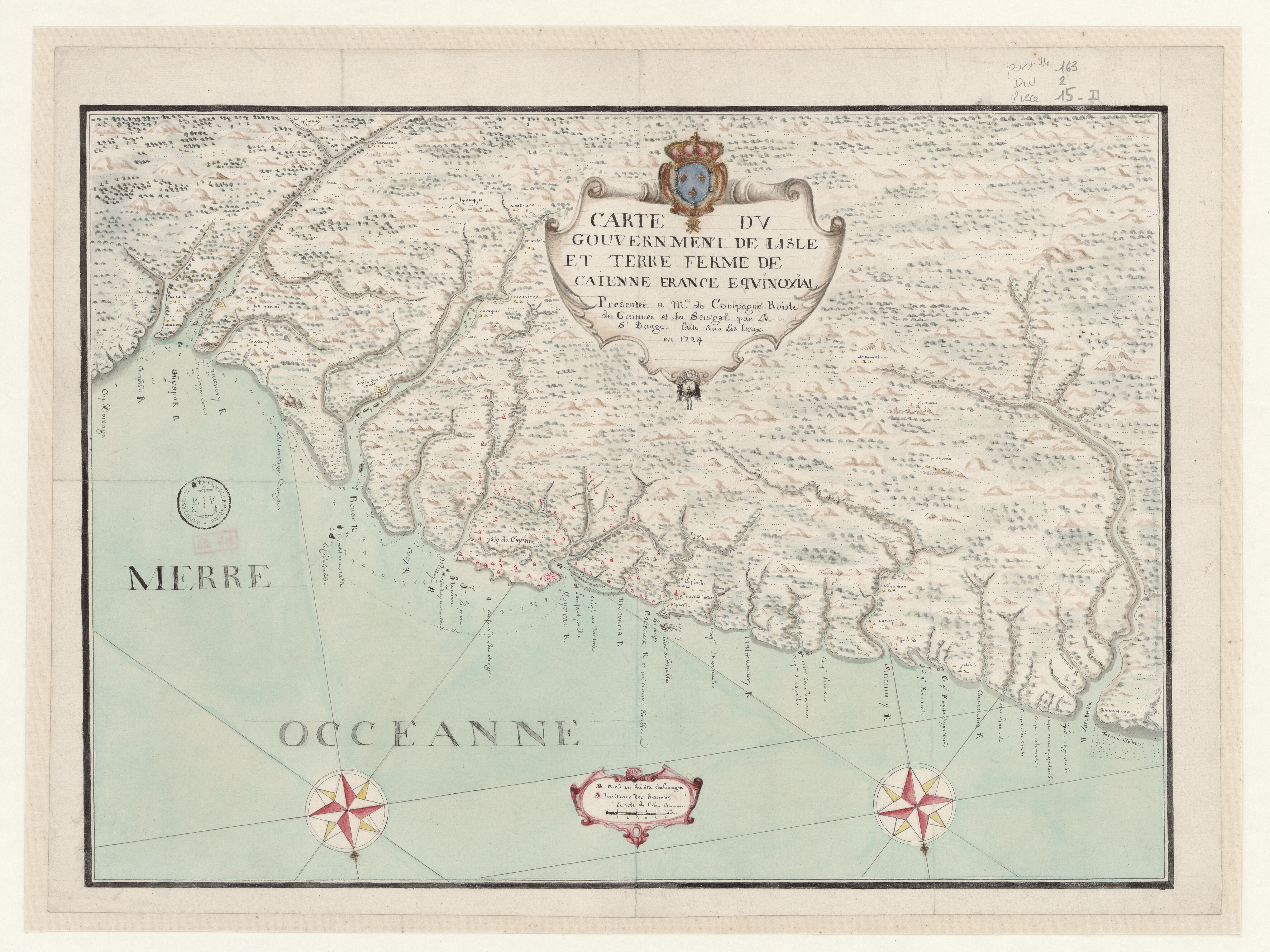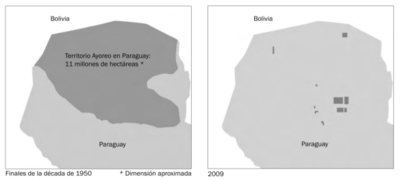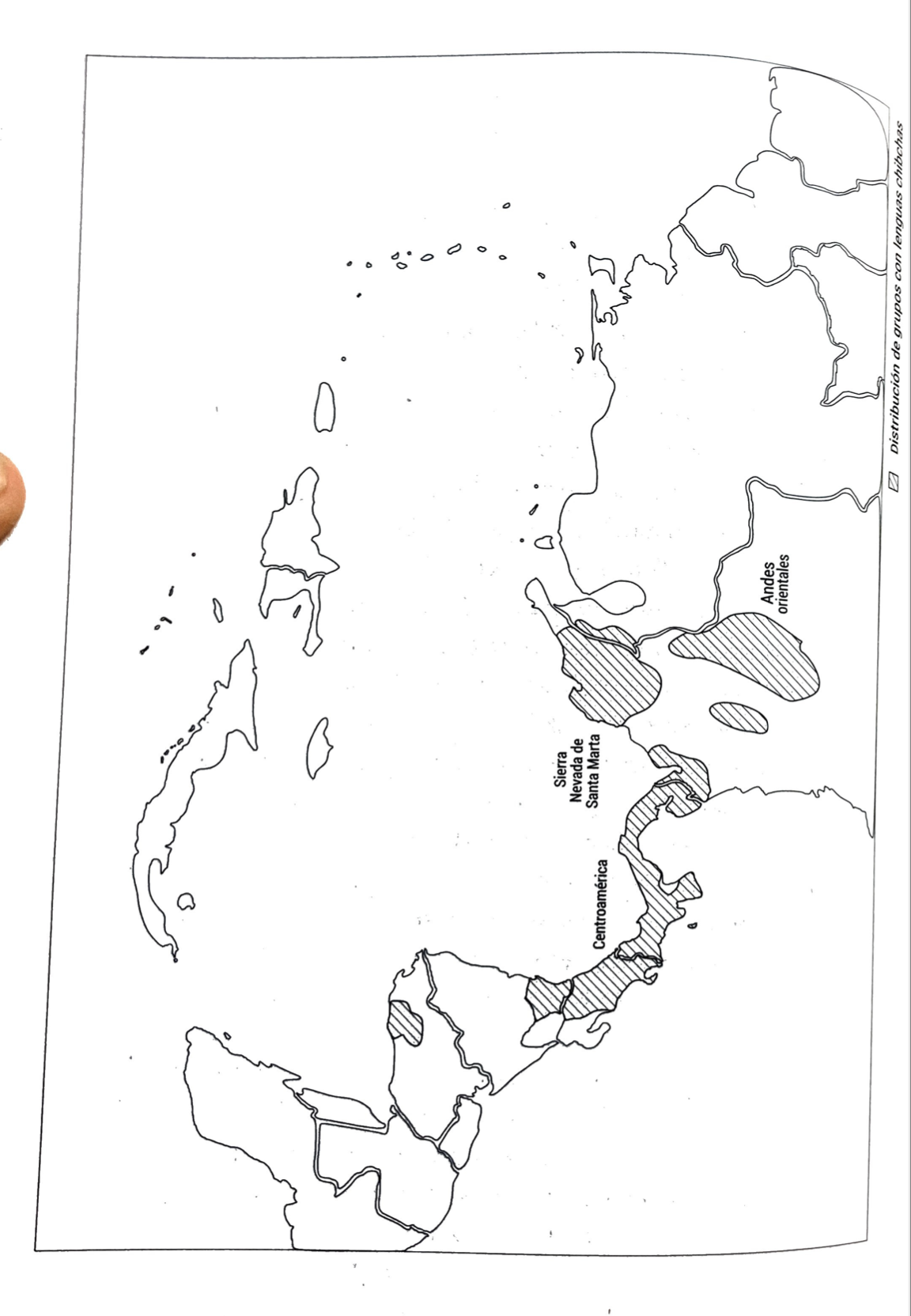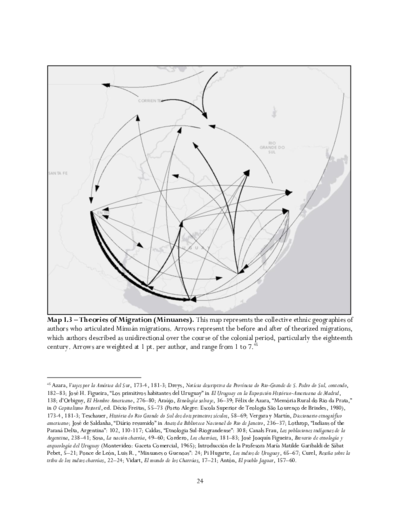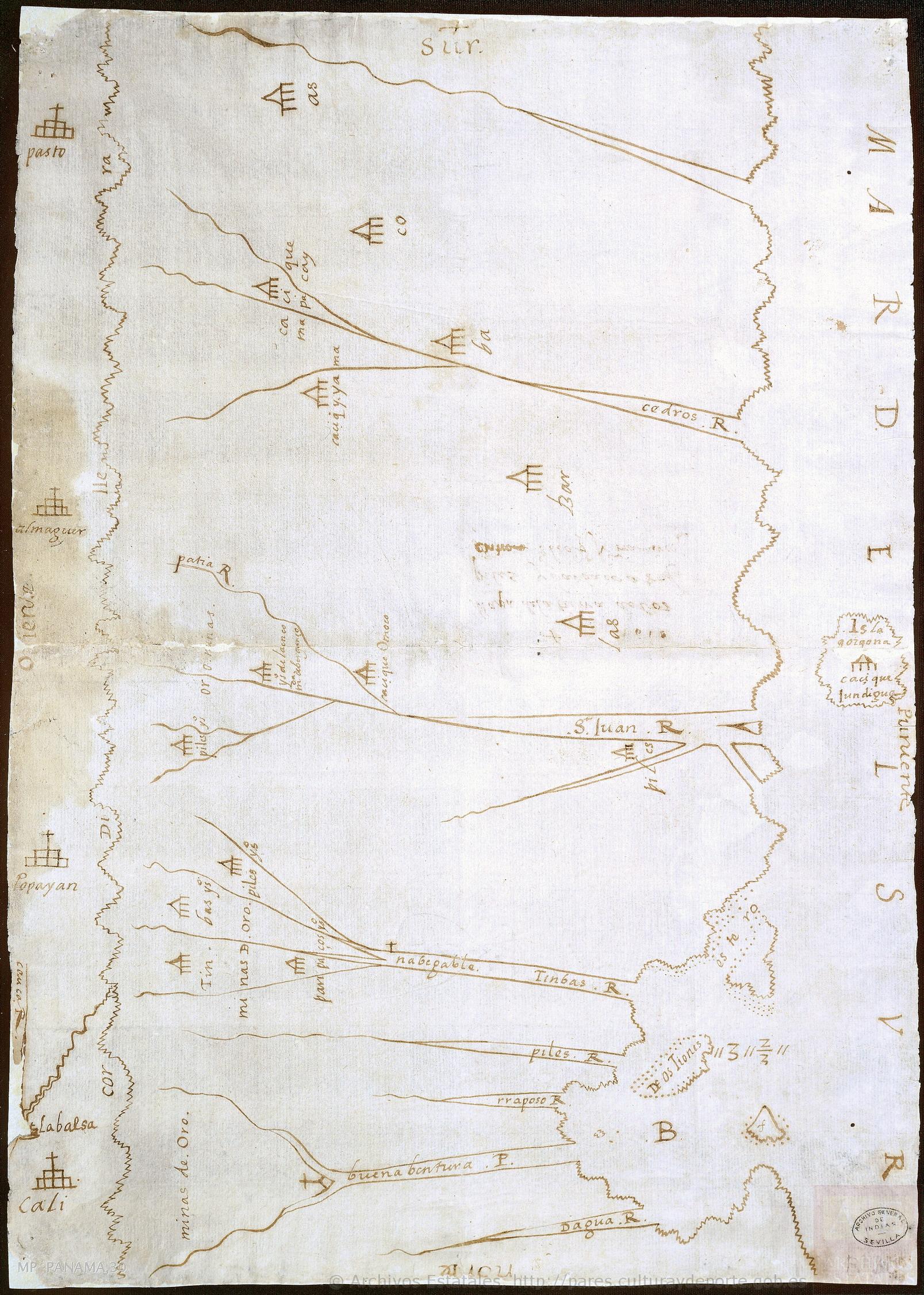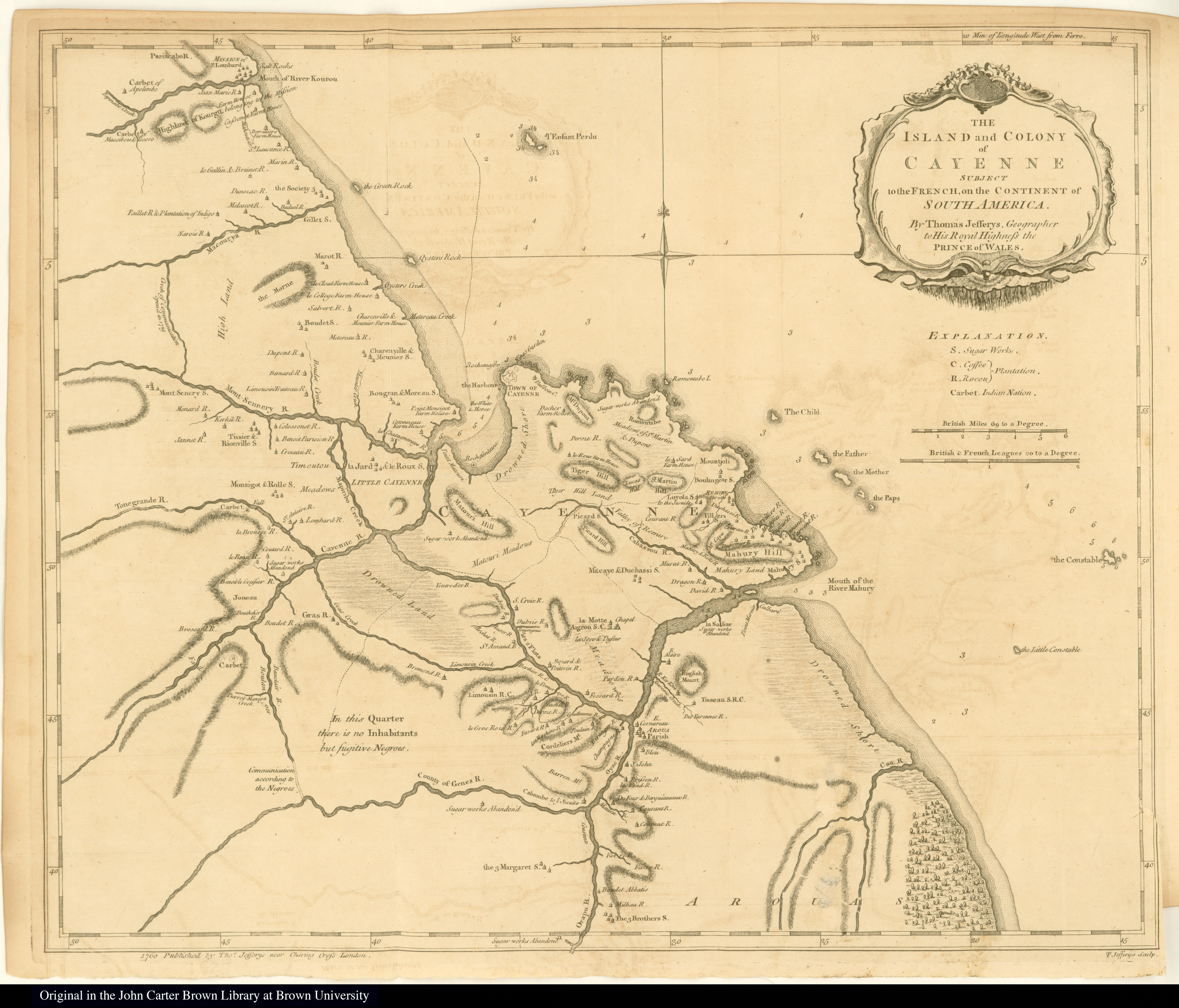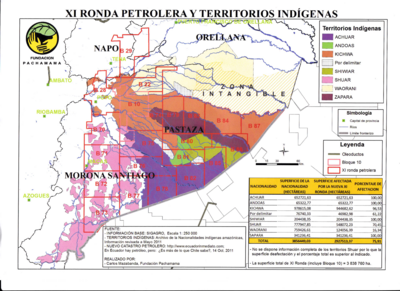Abstract
The current essay analyzes the processes of displacement of the Amanajó and Gamela peoples in the captaincy of Maranhão between 1763 and 1765. Under a historiography that seeks to emphasize the role of Indigenous peoples in the implementation of the Directorate in Portuguese America, this text suggests a perspective of the way in which the indigenous peoples in the captaincy of Maranhão saw the colonial reality, far beyond a vision of self-pity, passivity or subservience vis-a-vis an imposed system. Based on colonial administrative documents written by non-Indigenous people, it is somehow possible to retrieve numerous cues and evidence on how critical the Indigenous populations were to the colonization process, as it was necessary to gain the trust of the local inhabitants, sometimes modifying the course of the Portuguese empire’s claims over America. From the mastery of the Tupí language to persuade them to move to the sites established by the Portuguese, to the implementation of logistics that would keep the peoples in their new settlements, the experience evinces the diverse interests at play, which allows us to fathom its complex and dynamic dimensions and, thus, places the Indigenous people in a leading role —not only in the colonial process, but also in their own historical timeline.
In 1755, King Joseph I enforced the Indian Freedom Act, which not only established the condition of freedom for indigenous populations, but also put an end to settlements control by religious orders, who until then had had a monopoly on Indigenous labor.1 The condition of being a free individual, rather than a liberto, at the same time gave the Portuguese empire room to retain its tutelage over the Indigenous communities, setting up the Indian Directorate in 1757, which sought not only to incorporate the Indigenous populations into Portuguese colonial society, but also to put them on an equal footing with whites.2
The Indian Directorate that had been initially created to oversee the border not only of the States of Grão-Pará and Maranhão —corresponding to the current States of Pará, Maranhão, Amazonas and Piauí3—, but also of the Rio Grande de São Pedro region, covering the current State of Rio Grande do Sul, was responsible for transforming the old mission village structures into civil settlements, upgrading them to the category of Villages or Towns. In the case of the States of Grão-Pará and Maranhão, the occupation of these regions called for several displacement expeditions to the interior, with the purpose of adding new residents to swell the population of the Indian Villages and Towns.
As per the provisions set forth at paragraph 6 of the Directorate legislation, the expeditions to recruit labor would no longer be based on religious wars or rescue troops, but on the persuasion and certainty that the alliance with the Portuguese could be an excellent business, as well as on the acceptance of their lifestyle.4 In this sense, many Indigenous people agreed to live in the settlements established by the Portuguese, believing they would obtain advantages and benefits in return. This was key for the Portuguese empire, as gaining the trust of the Indigenous people meant retaining their possessions in the Americas, since foreigners were constantly attempting to take over the territory, as was the case with the Dutch and the Spanish. (Farage, 1991; Coelho, 2016).
However, this utilitarian approach in the occupation of the settlements should necessarily consider the reading that the Indigenous people themselves made of these displacements from their native lands to the villages and plazas founded by the Pombalino Directorate. To this end, two cases referring to the Amanajó and Gamela peoples —located in the captaincy of Maranhão between 1763 and 1765—, depict several negotiation mechanisms between the colonial power and the Indigenous communities who found —during this period— a way to reassert their interests (Dornelles, 2021). This period has been identified in documents retrieved from the Public Archive of the State of Pará (APEP) and the Overseas Historical Archive (AHU).
In September 1763, in the region of Pastos Bons, parish of São Bento das Balsas —located on the Itapecuru River in the south of the captaincy of Maranhão—, Joaquim de Melo e Póvoas, governor of the captaincy, informed the governor and captain general of the State of Grão-Pará and Maranhão, Manuel Bernardo de Melo e Castro, that there had been an occupation of the Mangabeiras Hacienda by the Amanajó Indigenous people. The governor also reported that the Indians had closed all forms of communication, besieged the residents, killed the cattle, and blocked access to their springs and crops.
According to the records, when faced with this situation, the settlers were forced to join forces to “get rid of these barbarians” (APEP, Codex 120, Document 77), —expression the source cites to refer to the Indians of the colonial period—, by gathering 97 people, in addition to seeking the help of Reverend Father José Antônio de Freitas, chaplain of Oeiras, capital of the captaincy of Piauí; and of the governor himself, João Pereira Caldas, who, at the time, was on a mission in the parish.
The documentation suggests access to the Mangabeiras Hacienda was not easy despite belonging to a very populated parish. Indeed, the troop formed by the neighbors and the São Bento das Balsas captain general took approximately five days to arrive. The records also indicate that the Amanajó settlement was located near the cattle ranch, since “a frightening settlement of gentiles” had taken it under siege. “Gentiles,” “barbarians,” “savages,” —to cite some of the most recurrent examples in colonial sources—, was the way in which the Portuguese sought to shame the Indigenous population, using these as valid grounds to continue the colonization process and the consequent expropriation of their lands (Coelho, 2002).
The main reason Father José Antônio de Freitas was asked for help, beyond the fact that he knew the place, was that he spoke Tupí language. In turn, the neighbors had characterized the Indians who occupied the estate as “gentle, yet strange in terms of their weapons, their signs, and their language; and furthermore, they had heard some of them in a house speaking some words in their Tupí language” (APEP, Codex 120, Document 77). As far as Father Freitas was concerned, he clearly saw this situation as an opportunity not only to convince the Amanajó to vacate the estate, but also to convert them to the Christian faith.
Once he arrived at the Amanajó settlement, the priest —who could speak Tupí language—, managed to enter the place in the company of “one of the two boys” who had been caught by the neighbors of the São Bento das Balsas Parish. The records describe that after arriving at “the high area of a forest”, José Antônio de Freitas “joined them [the Amanajó]” and, after some time, the Indians laid down their arms and “left the place”, attributing this precisely to the priest´s ability to speak their Tupí language (APEP, Codex 120, Document 77).
In this context, the mastery of a language to communicate with the Indigenous peoples must be interpreted as something more than a mere negotiation mechanism to use with local communities to meet the Crown´s interests. This element stands as a way in which the native people themselves could obtain advantages and benefits by allying themselves with the Portuguese; for although this is based on an asymmetric power relation, we should not overlook the leading potential the Indigenous communities displayed in the stewardship of the colonization process itself within the Portuguese America.
The documents describe that following this event, the native people began to admire the priest and followed him to a certain place, only identified as follows, “in the woods, where they have settled” (APEP, Codex 120, Document 77). It is worth remembering that the priest had gone to the Parish of São Bento das Balsas on a mission, and he was soon to return to Oeiras, close to Pereira Caldas. However, once the Amanajó had settled in the interior and south of Maranhão, the Indigenous communities opposed to the priest leaving them. For this reason, he was forced to postpone his return to Piauí, in an attempt by authorities —who dared not contradict Indigenous demands— to establish a trust-based relationship with the Amanajó community.
What happened during the migration of the Amanajó group allows us to prove, once again, that, despite the disproportionate power relations and the gradual and violent process of expropriation of Indigenous lands, these peoples were able to give new meaning and significance to colonial instruments. This experience gave the Amanajó the chance to reassert their interests —on which the continuity of both the livelihoods of Pastos Bons Parish residents and the process of Portuguese colonization in Maranhão depended.
Another emblematic case that allows us to reflect on the role of the Indigenous populations as actors in the Portuguese colonization is the displacement of the Gamela community to Lapela —which makes our focus shift a little further West of the captaincy of Maranhão. Carried out in 1764 by the leader of the Gamela group, the relocation of this people called for a round of negotiations by the government, which went so far as to use resources from the Royal Treasury to obtain products in order to persuade the natives of the advantages of their settlement in the new colony.
In a letter dated August 4, 1764, Joaquim de Melo e Póvoas provides an in-depth report on the Gamela displacement. It indicates how the governor of Maranhão needed to employ resources from the Royal Treasury to persuade Chief Beibeto, of Aldeia Grande, to bring the rest of the natives of his community to accept the relocation to Lapela, beginning with the gift of “dressing him well” (AHU, Avulsos do Maranhão, Box 41, Document 4065). While this act by the governor may refer to paragraph 15 of the Directorate legislation, it is also necessary to consider it from the perspective and meaning that the Indians themselves gave to clothing, beyond its commercial value. In this sense, Márcio Couto Henrique (2014) highlights the fact that there is also a symbolic value in the exchanges and transactions between Indigenous populations and state agents.
In this context, it is also essential to remember that the Pombalino legislation considered the chief of the Indigenous settlement to be responsible for the management of the Villages and Towns along with the Director. This allows us to fathom the power with which Beibeto had been invested to mediate in the negotiations with the government, with the purpose of convincing his peers of the advantages of moving to the site established by the Portuguese power. Such was the power of the Indigenous authority that, in addition to the “gift” formerly received from Melo and Póvoas, he also suggested the governor to send cloths, garments and tools that, in Beibeto´s opinion, would be a way to convince the Gamela community to move to Lapela.
It is therefore possible to interpret the outcome of this case through two different lenses. On the side of the Portuguese empire, the importance of having quickly satisfied the interests of its subjects stands out, something established in the Directorate´s legislation, but also something vital given the dependence that the stability of the Portuguese colonization in America had on maintaining the peoples´ connivance. On the side of the Gamela natives, this negotiation process puts forth the understanding that the Indians themselves had of the colonial reality, seeking to make the most of such situations. This case presents then several mechanisms through which the Indigenous populations, under unequal power relations, sought to reassert their leadership in the interaction between them and the colonial power.
As in the former case of the Amanajó in São Bento das Balsas, the Gamela community was similarly kept in the Lapela settlement. Moving a community from its native land to a completely different one required not only persuasion mechanisms in place, but also effective ways of keeping the Indigenous people in the new settlement. The latter was the most difficult, as it was common in the Villages and Towns for runaways and defectors to appear, due to the discontent that some natives had with the Directorate system.
In the same letter mentioned above, Joaquim de Melo e Póvoas refers to Friar Antônio da Conceição —parish priest of Lapela—, as a “saint” for his behavior with the Gamela natives. The governor explains that the money collected at mass service was returned “in the form of cloths to cover their nakedness,” which allows the authority to attest to the good behavior of religious leaders towards the natives, and to their full compliance with the Directorate mandates (AHU, Avulsos do Maranhão, Box 41, Document 4065). As mentioned above, more than the demands of the Portuguese empire, it is also necessary to see the meaning that the Indians themselves attributed to this model of society imposed by the Kingdom. As has been formerly mentioned, rather than the demands by the Portuguese empire, it is also necessary to look at the meaning the natives themselves attributed to this societal model imposed on them by the Kingdom.
The experiences of negotiation with the Amanajó and Gamela communities should be understood far beyond the scope of negotiations with the state. It is also vital to comprehend them in the dimension of Indigenous leadership, as the demands imposed by these populations shaped the course the Portuguese empire had set forth. Although mediation was based on non-violence, —that is, on the mechanisms of certainty and persuasion—, the practice turned out to be much more complex than expected, requiring coordination to take the demands of the Indigenous populations into account at large.
Therefore, the Amanajó and Gamela displacement cases that took place between 1763 and 1765 in the eastern region of the States of Grão-Pará and Maranhão, rather than illustrating eviction processes within the framework of a violent policy of imposition of the European lifestyle, show that the Indigenous peoples saw in the alliance with the Portuguese a way of reworking their own identities. While the Pombalino policy attempted —in every conceivable way—, to assimilate the Indigenous peoples into colonial society, these populations not only reacted in diverse ways, but also sought to ascribe different meanings to the colonization process, as was seen in the negotiation rounds between them and the colonial power.
References
Archivo Público del Estado de Pará. Correspondência de diversos com o Governo, Codex 120, Document 77
Archivo Histórico de Ultramar. Projeto Resgate, Suelto de Maranhão, Box 41, Document 4065
Bombardi, Fernanda (2014). Pelos interstícios do olhar do colonizador: descimentos de índios no Estado do Maranhão e Grão-Pará (1680-1750). Master’s degree in history, Thesis, University of São Paulo, São Paulo, Brazil.
Coelho, Elizabeth (2002) Territórios em confronto: a dinâmica da disputa pela terra entre índios e brancos no Maranhão. São Paulo: Hucitec.
Coelho, Mauro Cezar (2016) Do sertão para o mar – um estudo sobre a experiência portuguesa na América: o caso do Diretório dos Índios (1750-1798). São Paulo: Livraria da Física.
Dornelles, Soraia Ventas (2021) Registros de Fundações, Ereções e Posses das Vilas: um olhar sobre as vilas de índios do Maranhão. Sæculum – Revista de História, v. 26, n. 44, p. 308-327.
Farage, Nádia (1991) As muralhas dos sertões: os povos indígenas no rio Branco e a colonização. Río de Janeiro: Paz e Terra; ANPOCS.
Henrique, Márcio Couto; Morais, Laura Trindade de (2014) Estradas líquidas, comércios sólidos: índios e regatões na Amazônia. Rev. Hist. (São Paulo) 171: 49-82.
Meireles, Mário Martins (1960) História do Maranhão. Río de Janeiro: DASP, Serviço de Documentação.
Melo, Vanice Siqueira de (2011) Cruentas guerras: índios e portugueses nos sertões do Maranhão e Piauí (primeira metade do século XVIII) . Master’s degree in history, Thesis, Federal University of Pará, Belém, Brazil.
This contribution to the Mellon-Upenn Initiative is one of the outcomes of the research conducted towards my Master’s degree: Felipe William dos Santos Silva, “Pelos campos, matas, ilhas, rios, baías e sertões: a espacialidade das povoações do Diretório dos Índios e as dinâmicas territoriais na capitania do Maranhão (1757-1774)”, Master’s degre in history, Thesis, Federal University of Pará, Belém, Brazil, 2023. ↩︎
It is worth pointing out the semantic problem between free and freedman (liberto in Portuguese). In this context, freedman meant to be outside the State´s tutelage, having to look for other means of survival, while free consisted in taking the indigenous labor force away from the religious orders´ control, and transferring it to the State. ↩︎
According to Mário Martins Meireles (1960, p. 162), between 1753 and 1774, the State of Grão-Pará and Maranhão had a jurisdiction that encompassed the captaincies of Grão-Pará, Maranhão and Piauí, in addition to the Negro River, which, in 1755, would become a captaincy. Although these captaincies were subordinated to the captain general, they had a government that granted them a certain degree of autonomy as per Royal Decree dated August 6, 1753, which eliminated the captaincy´s position of captain general and created that of governor. ↩︎
Religious wars and rescue troops were the way in which the state, through a “cleansing” policy in the territory, sought to wage armed conflicts against Indigenous peoples. In this regard, see: Vanice Siqueira de Melo (2011) and Fernanda Bombardi (2014). ↩︎
